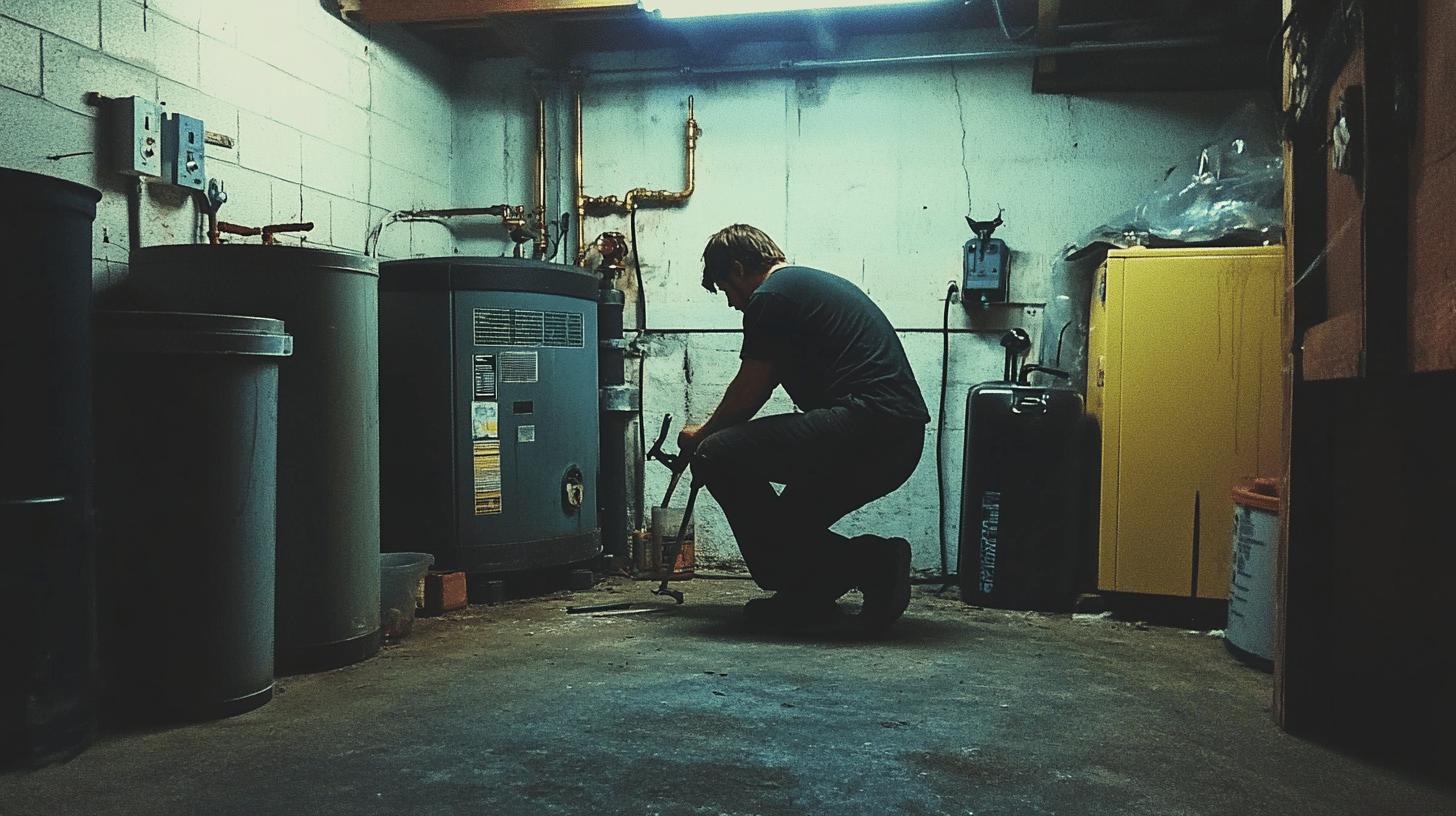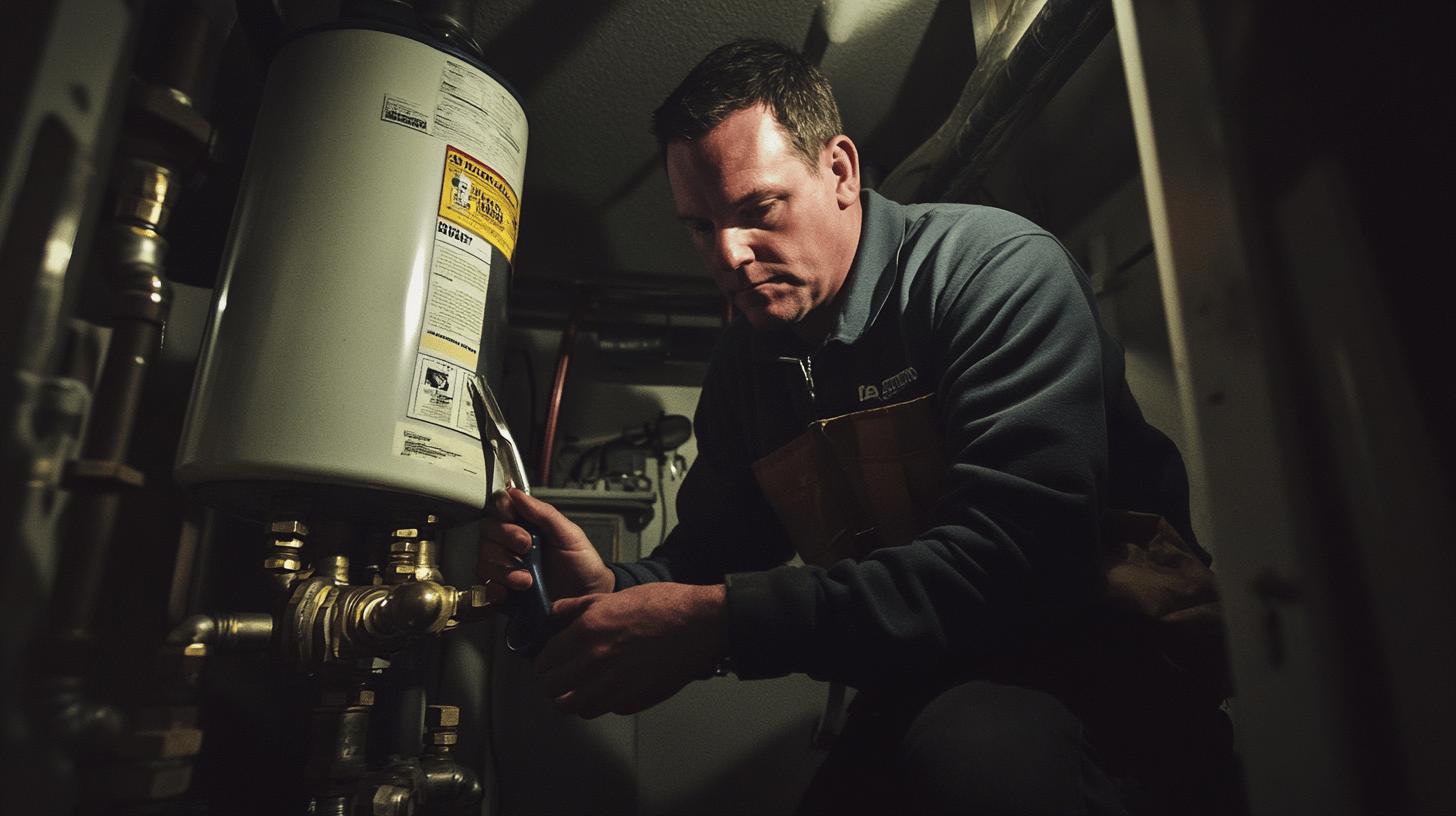TL;DR:
- The shut-off valve for water heaters is typically located on the cold water supply line at the top.
- Two types of valves: lever-style (quarter turn) and knob-style (multiple turns).
- To shut off: turn off power/gas, locate the valve, and turn it clockwise.
- Common issues include difficulty turning, incomplete shut-off, and corrosion; maintenance is key to prevent these.
- Solutions: lubricate valves, clean or replace, and use corrosion-resistant models.
- Professional plumbers provide routine inspections, safety checks, and emergency response.
- Automatic shut-off valves detect leaks, reducing water damage risks and offering remote monitoring.
Learning about plumbing snakes gives you useful tips for fixing drain problems. You now know which type of snake to use for different clogs and how to use it the right way. Following the steps carefully helps avoid mistakes and keeps your pipes safe. Taking care of your snake after use means it’ll last longer and work better next time. While you can fix a lot on your own, calling a pro is smart for tough problems. These tips will help keep your drains clear and your plumbing working great.
Locating the Water Shut Off Valve for Your Water Heater
The shut-off valve for your water heater is usually located on the cold water supply line, which enters at the top of the heater. Knowing where this valve is can be super helpful for maintenance or in case of an emergency, like a leak. It’s usually easy to reach, often located just above the heater, so you can quickly turn the water off if needed.
There are different types of valves, like lever-style ball valves and knob-style valves. Lever valves are easy to spot with their unique handle, and you only need to turn it a quarter turn to open or close it. When the handle is parallel to the pipe, it’s open; when it’s perpendicular, it’s closed. Knob-style valves work like regular faucets, and you’ll need to turn them a few times to open or close. Knowing these valve types helps you operate them quickly when needed.
To identify your water heater’s shut-off valve:
- Look at the cold water supply line at the top of the heater.
- Determine if it is lever-style or knob-style.
- Consider other locations like near the main water line.
How to Shut Off Your Water Heater Safely

Turning off your water heater the right way is important, especially in emergencies. First, cut off the power supply. For electric heaters, switch off the circuit breaker to avoid shocks or damage. For gas heaters, turn the gas valve to “off.” This prevents dangers during maintenance or leaks.
If you don’t shut it down properly, you could end up with big problems. For example, if the water isn’t off before you cut the power, the heating elements could overheat and cause expensive damage. Not turning off the gas or power properly can also lead to gas leaks or electrical issues. Doing it right keeps your heater and home safe.
To properly shut off your water heater, follow these steps:
- Turn off the heater’s power.
- Find the shut-off valve on the cold water line.
- Turn the valve clockwise to stop the water flow.
- Check for any leaks or issues.
- Call a professional plumber if problems continue.
- Use diagrams or videos for help if needed.
Taking these steps keeps both your water heater and home safe. If you’re not sure what to do or run into any issues, it’s a good idea to call a professional plumber for assistance.
Troubleshooting Common Shut Off Valve Issues
Shut-off valves can have common issues like being hard to turn or not fully shutting off the water. Mineral deposits and corrosion are often the cause, making the valve tough to operate and possibly leading to leaks. It’s important to keep the valve working smoothly, especially in emergencies when you need to turn off the water quickly.
To prevent problems, do regular maintenance. Try turning the valve every once in a while to stop it from seizing up, especially if it’s not used often. This helps remove small mineral build-up before it gets worse. Also, check for signs of corrosion or wear, which could mean it’s time to replace the valve. Keeping it in good condition ensures it works when you need it most.
Common Valve Problems and Solutions
| Problem | Solution |
|—————————-|————————————-|
| Difficulty turning | Apply lubricant, or gently tap valve |
| Incomplete shut-off | Clean or replace the valve |
| Valve corrosion | Replace with corrosion-resistant model |
| Mineral deposit build-up | Soak in vinegar, or use a descaler |
Regular care of your water heater’s valve prevents costly issues. If maintenance doesn’t resolve problems, consult a professional plumber to ensure safety.
The Role of Professional Plumbers in Valve Maintenance

Hiring professional plumbers for valve maintenance ensures everything runs smoothly. They have the expertise to spot issues you might miss, like wear and tear, which helps avoid future problems. Their skills and tools also make sure valves function correctly and reliably.
DIY maintenance might seem like a good idea, but it can be risky, especially with older systems. Handling valves incorrectly could lead to even more damage, which might cost you more in repairs. Older plumbing systems may have unique challenges that need specialized care, and without the right tools, you could end up hurting the valve or the pipes.
- Routine inspections.
- Valve replacement.
- Safety checks.
- Leak prevention.
- Emergency response.
Professional plumbers keep valves in top condition, preventing issues before they arise and giving you peace of mind. In emergencies, having a reliable plumber on hand ensures quick fixes, minimizing any potential damage.
Benefits of Automatic Shut Off Valves for Water Heaters
Automatic shut-off valves are a great way to protect your home from water damage. They detect leaks and stop the water flow right away, preventing costly repairs. Using sensors or timers, they monitor water flow and quickly address any issues, helping to avoid major water damage. This proactive approach not only protects your property but also conserves water.
In emergencies, these valves are faster than manually turning off the water, ensuring your home is safe even if you’re not there. Their quick response helps prevent small leaks from becoming big problems, giving you peace of mind and protecting your property.
- Automatic response to leaks.
- Suitable for remote monitoring systems.
- Reduces water damage risk.
Final Words
Knowing where and how to operate the shut-off valve for your water heater is key for both maintenance and emergencies. Recognizing whether your valve is a lever or knob style can make a big difference when you need to act fast. Regular maintenance and having a professional plumber check the valve ensures it works properly when you need it most.
If you want extra protection, consider investing in automatic shut-off valves. These valves add an extra layer of safety by stopping water flow at the first sign of a problem, helping prevent costly water damage. Stay proactive and informed to keep your water heating system running smoothly and protect your home.
FAQ
Do water heaters have a water shut-off valve?
Most water heaters include a shut-off valve on the cold water supply line entering at the top. This valve is typically a lever or knob, crucial for maintenance and emergencies.
How do I shut off the water valve on my water heater?
To shut off the water heater’s valve, locate the cold water line valve and turn it clockwise until it stops. Ensure the electric power is off to prevent damage.
Where is the main water shut-off valve near the water heater?
The main shut-off valve is generally on the cold water supply line feeding into the top of the water heater. Sometimes, valves are located near the home’s main water line.
Is it safe to turn off the water supply to a hot water heater?
Turning off the water supply to a hot water heater is safe if done correctly. Ensure the electric supply is off and follow proper procedures to avoid potential damage.
What is the best type of water shut-off valve for a water heater?
Lever-style ball valves are often preferred for their durability and ease of use. Knob-style valves are also common, but may involve more maintenance over time.
What if there’s no shut-off valve on my hot water heater?
If no shut-off valve is present, consider installing one as they are essential for maintenance and emergencies. Consult a professional plumber for installation.
Are automatic shut-off valves beneficial for water heaters?
Automatic shut-off valves are beneficial as they automatically stop water flow during leaks, providing additional safety and preventing potential water damage.
How can I replace a water heater shut-off valve?
Replacing a shut-off valve involves draining the heater, removing the old valve, and installing a new one. For safety and accuracy, it’s advisable to hire a professional plumber.

